In this post, let’s learn about the bluefin tuna and the largest specimen ever caught.
Read along to watch the largest Atlantic bluefin tuna caught on camera!
Introduction
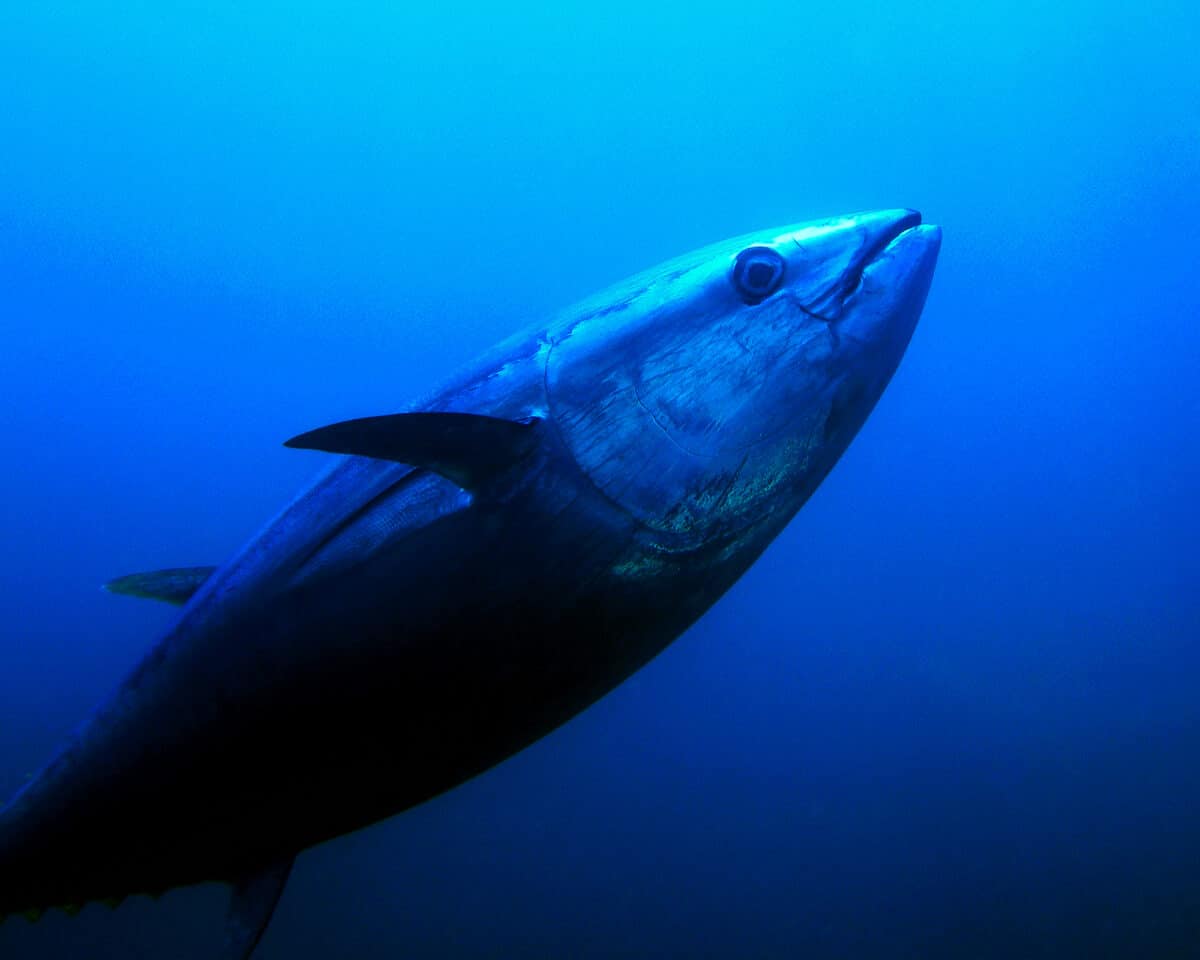
The Atlantic bluefin tuna is considered one of the world’s largest and most iconic fish species (uncover lots more species here.) These magnificent creatures have been recorded to reach as much as 10 feet in length and over a thousand pounds in weight. It’s no wonder they’re a mighty presence in the ocean’s ecosystem.
As top predators, they play an essential part in preserving the delicate balance of the marine ecosystem. Unfortunately, the Atlantic bluefin tuna population has declined recently due to overfishing and many other threats.
Key Points

- The largest Atlantic bluefin tuna ever caught weighed 1,496 pounds and was caught in Nova Scotia, Canada, in 1979.
- Atlantic bluefin tuna are highly migratory fish that can travel great distances and depths.
- Overfishing, habitat loss, and climate change are major threats to Atlantic bluefin tuna populations.
- International and national conservation efforts are being implemented to protect Atlantic bluefin tuna, including fishing quotas and protected areas.
- Research on Atlantic bluefin tuna populations and behaviors is ongoing to better inform conservation efforts.
- Supporting reputable organizations dedicated to marine conservation is one way individuals can contribute to protecting Atlantic bluefin tuna populations.
World Records of Caught Atlantic Bluefin Tuna
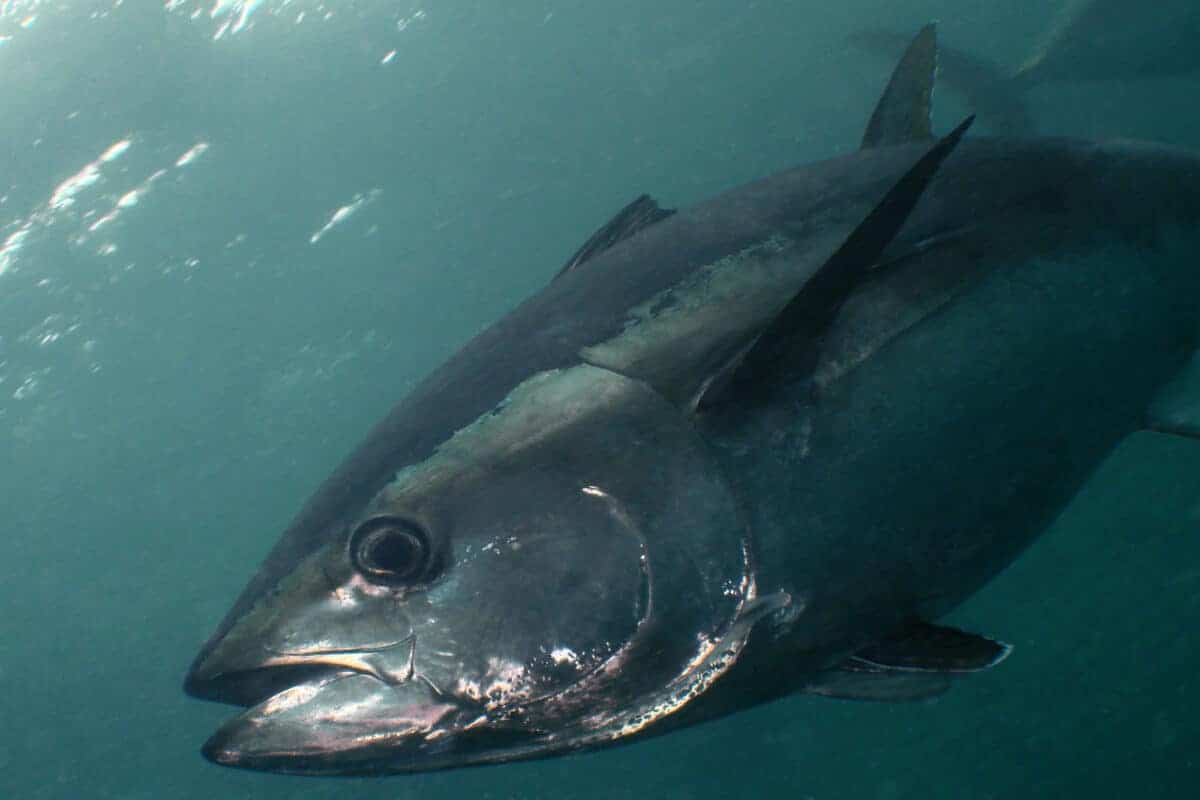
The Atlantic bluefin tuna is a prized catch for sport fishermen, with many attempting to break world records for the largest fish caught. Over the years, several catches have earned a place in the record books. Here, we will discuss the largest Atlantic bluefin tuna and other notable historical catches.
Largest Atlantic Bluefin Tuna Ever Caught
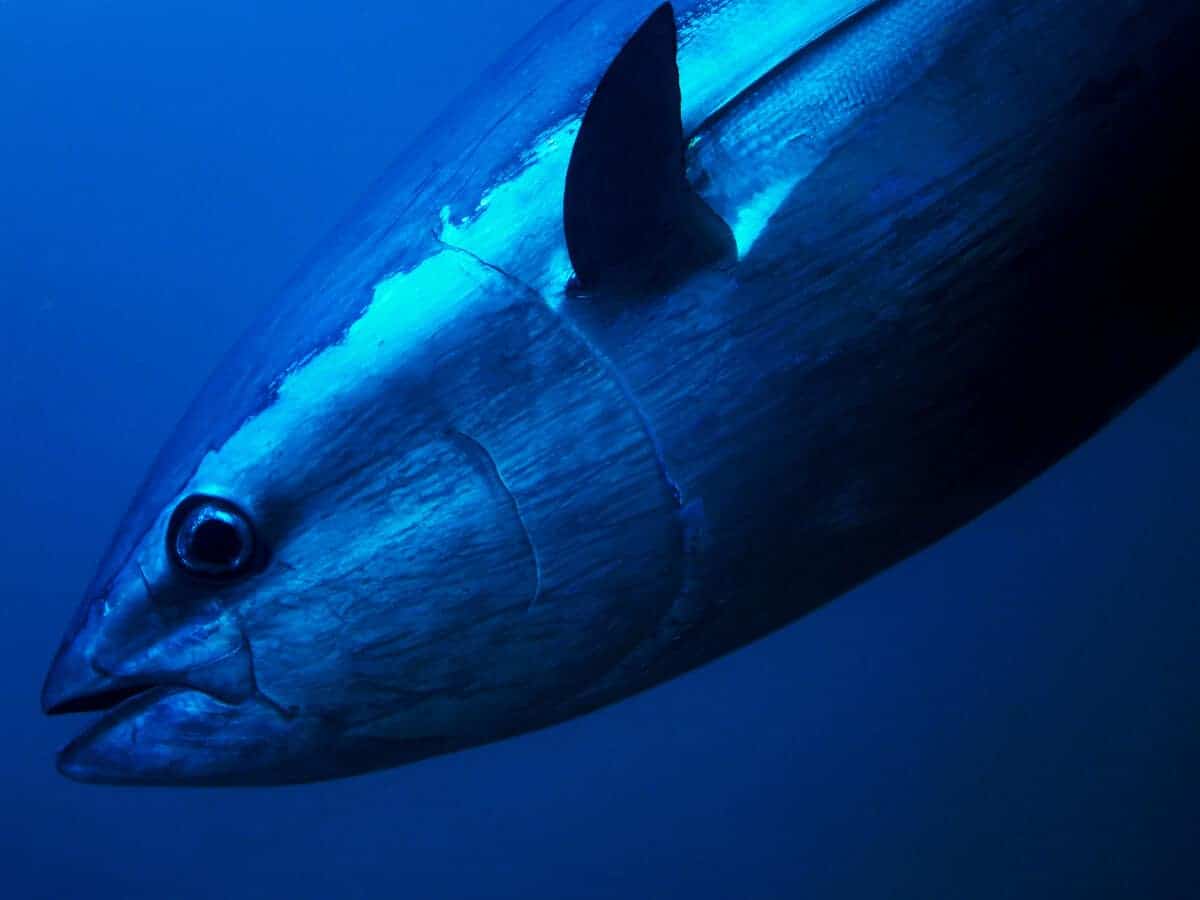
1979 brought with it the catch of the century. A Canadian fisherman caught what was easily the largest recorded bluefin tuna. Ken Fraser, the fisherman, caught it in Canada (Nova Scotia) and measured it to be nearly 1500 pounds (1496 pounds to be exact).
Fraser spent a staggering 45 minutes trying to bring the fish in, and an additional 10 hours were required to remove the excess seawater from the fish’s body through dehydration.
This record-breaking catch remains the largest Atlantic bluefin tuna ever caught, more than four decades later.
Other Notable Catches
While Ken Fraser’s catch remains the largest on record, there have been many other impressive catches throughout history.
In 2012, a California man caught an 873-pound Atlantic bluefin tuna off the coast of Mexico, breaking the previous world record for the heaviest fish that has ever been caught with a rod and reel. Three years later, in 2015, a fisherman in Prince Edward Island caught a 1,269-pound Atlantic bluefin tuna.
Characteristics and Habitat of Atlantic Bluefin Tuna
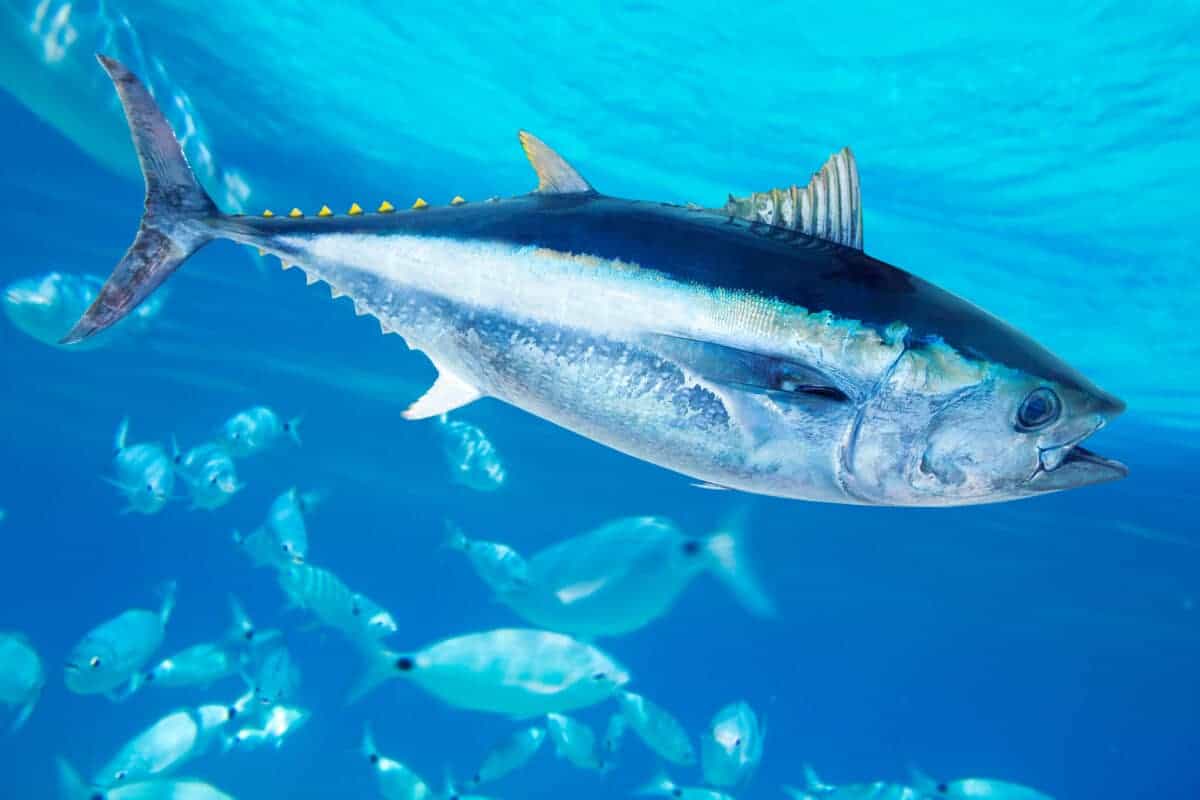
The Atlantic bluefin tuna is a remarkable species with unique physical characteristics and a fascinating migratory pattern. In this section, we will explore the Atlantic bluefin tuna’s physical characteristics, habitat and migration patterns, and diet.
Physical Characteristics
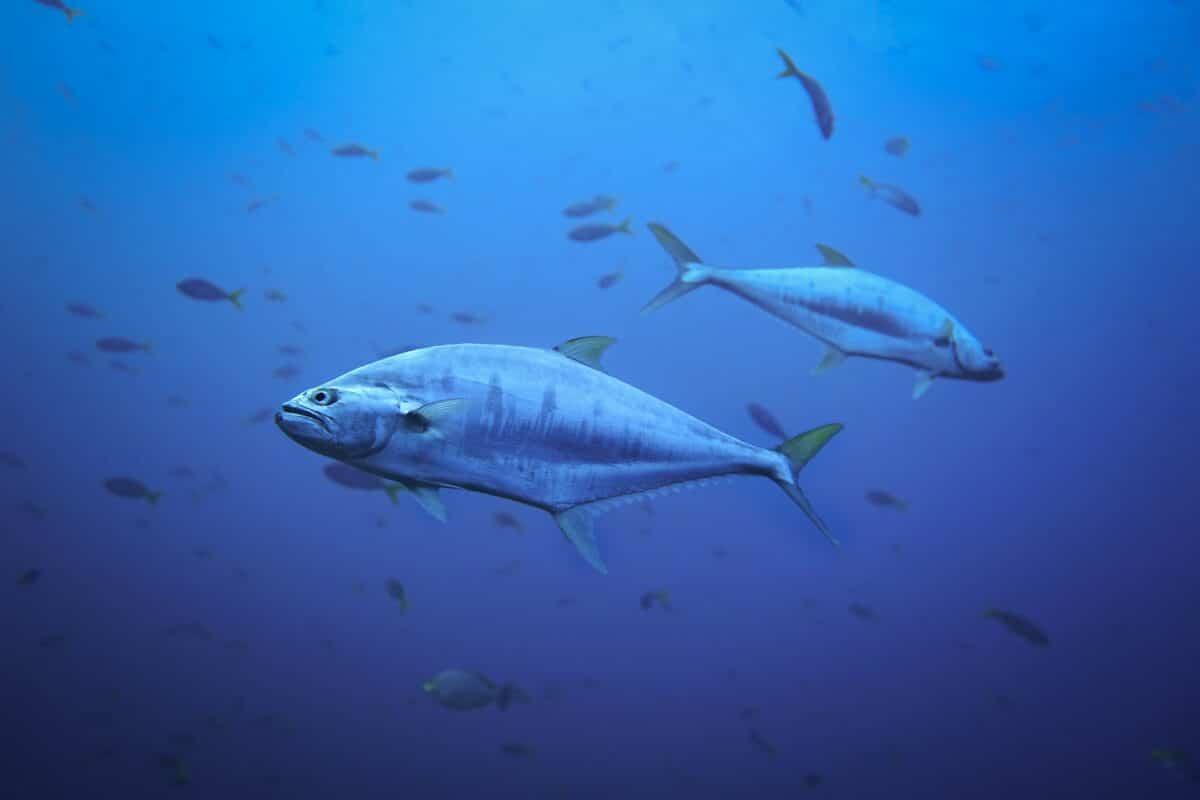
Atlantic bluefin tuna are, in scientific discovery, considered some of the largest fish ever found in the wide blue seas, with streamlined bodies built for speed.
They are known for their metallic blue and silver coloration on the body’s top half and iridescent silver coloration on the bottom half.
They have two dorsal fins, one long and one short, and their tail is shaped like a crescent moon.
Atlantic bluefin tuna have a large heart and a unique blood vessel system that allows them to keep their body temperature elevated, which helps them swim faster in cold water.
Habitat and Migration Patterns

Atlantic bluefin tuna is a fish that calls the Atlantic Ocean home. From Newfoundland to Brazil and Norway to South Africa, these fish propagate throughout. They are also highly migratory, with some populations traveling thousands of miles yearly.
Moreover, these creatures spawn in the Mediterranean Sea and the Mexican Gulf in the western Atlantic. Since these waters heat up during summer, these fish’s migratory behaviors are created when they move to cooler waters this season.
Diet

Atlantic bluefin tuna eat mostly smaller fish, squid, and crustaceans. They’re really hungry all the time and can eat about 25% of their body weight every day!
Threats to the Atlantic Bluefin Tuna

Even though they’re big and strong, Atlantic bluefin tuna have some big problems. These issues are putting them in danger, just like a lot of other fish. Let’s talk about the main problems they face: too much fishing, losing their homes, and climate change.
#1 Overfishing

The biggest problem for Atlantic bluefin tuna is overfishing. They’re a popular ingredient in sushi, and since they grow slowly, they really run the risk of being overfished. Some governments are trying to cut down on how many can be caught, but it’s still a big problem.
#2 Habitat Destruction

Atlantic bluefin tuna need certain places to spawn and eat. But pollution and other human activities are sadly destroying these places. Additionally, dams can stop them from getting to their spawning areas – again decreasing their numbers.
#3 Climate Change

Climate change is another big threat to them. As the ocean gets warmer, it disturbs both their migration and what they eat. Also, the ocean getting more acidic from more CO2 can hurt their growth.
If you want to know more about what’s threatening Atlantic bluefin tuna and how people are trying to help, check out the World Wildlife Fund website.
Conservation Efforts for Atlantic Bluefin Tuna
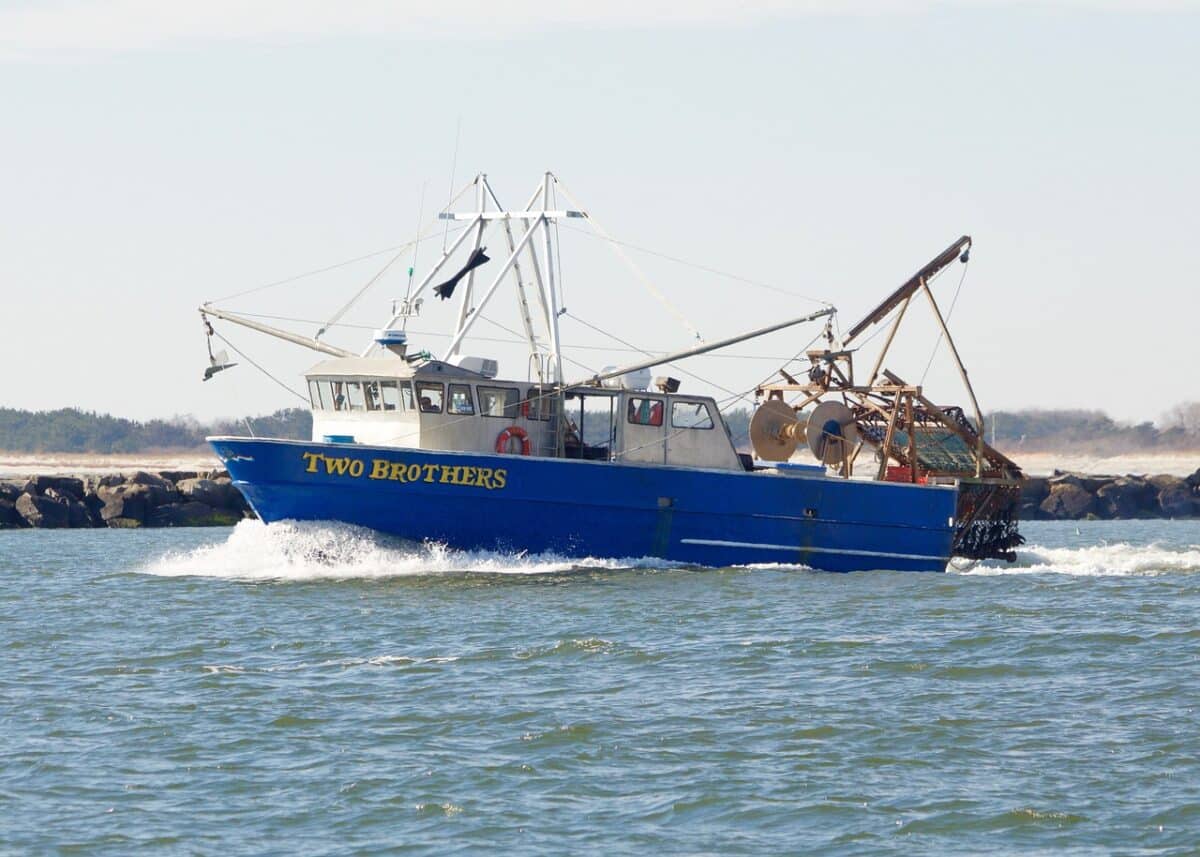
Thankfully, efforts are being made to conserve Atlantic bluefin tuna populations and protect them from the threats they face. This section will discuss some conservation efforts made for Atlantic bluefin tuna, including international agreements, fishing regulations, and scientific research.
International Agreements

The International Commission for the Conservation of Atlantic Tunas (ICCAT), which as their title might imply, was created for the preservation of Tuna populations. They created a plan for their recovery in 2007. The plan includes measures such as reducing fishing quotas, improving data collection, and increasing enforcement of fishing regulations. Since implementing the recovery plan, the population of Atlantic bluefin tuna has shown signs of recovery.
Fishing Regulations

Fishing regulations have also been implemented to protect Atlantic bluefin tuna populations. In the United States, there are now strict fishing regulations in place for Atlantic bluefin tuna. These rules regulate the size of tuna you’re allowed to catch, and also when you’re allowed to fish. The European Union has made similar rules, including catch limits and the use of certain fishing gear.
Scientific Research

Scientific research is perhaps the most important part when it comes to the conservation of Atlantic bluefin tuna. Researchers are studying the behavior and biology of bluefin tuna to better understand how to protect them. For example, newly invented electronic tagging helps researchers track the movements and behavior of bluefin tuna.
The Bottom Line
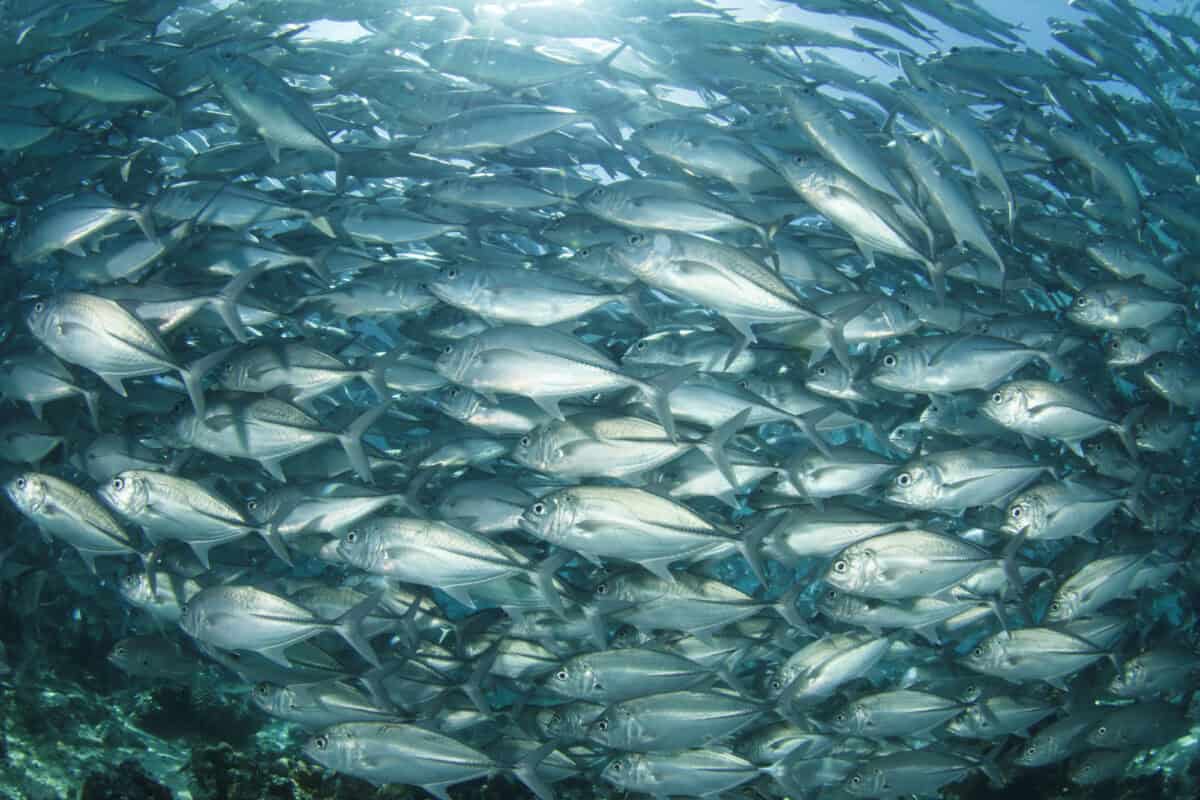
Facts About Atlantic Bluefin Tuna
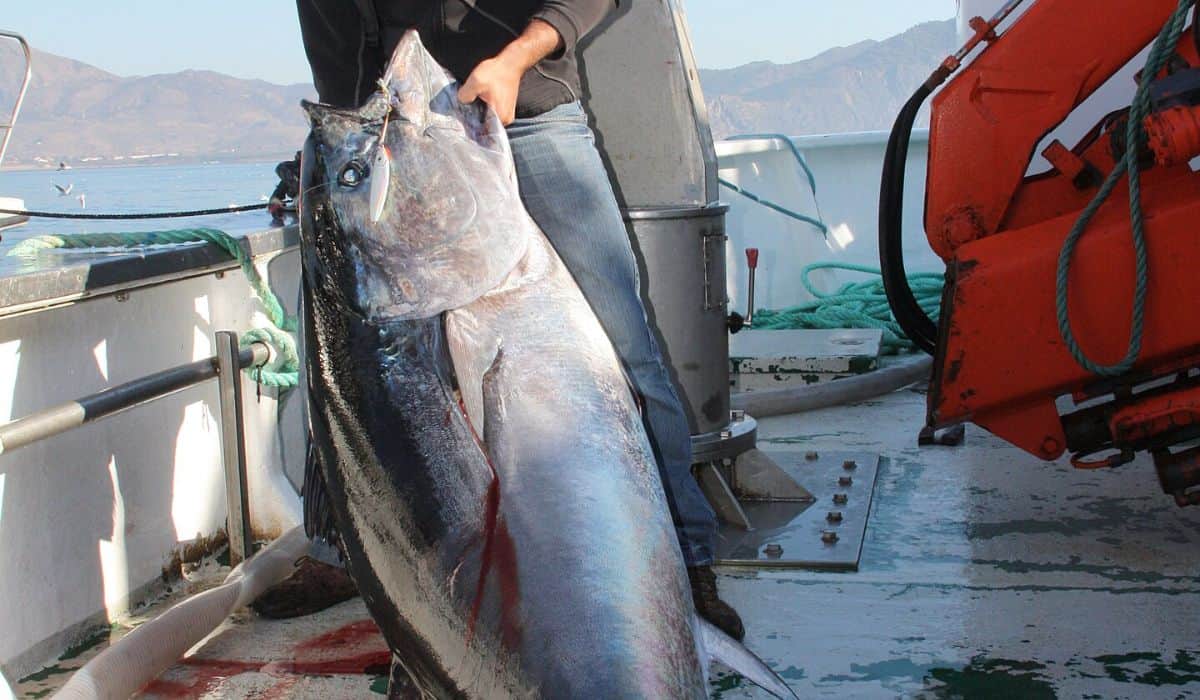
These sleek giants of the ocean are more than just delicious sushi. Atlantic bluefin tuna boast some incredible adaptations that make them true marvels of the sea.
Built for Speed: Torpedo on the Move

Atlantic bluefin tuna are living rockets! Their streamlined bodies, complete with retractable fins and smooth skin, allow them to slice through the water at speeds exceeding 40 miles per hour. This impressive feat is aided by their warm-blooded physiology, which keeps their muscles at peak performance even in cold ocean depths.
Million Dollar Meals: From Tiny Larvae to Ocean Giants

These titans of the tuna world start out incredibly small, hatching from eggs that are barely a millimeter wide. But don’t let their size fool you! Atlantic bluefin tuna are voracious eaters, growing rapidly on a diet of plankton, herring, and mackerel. By adulthood, they can reach a staggering 13 feet in length and weigh up to 2,000 pounds – a true transformation!
Thank you for reading this post about the largest bluefin tuna ever caught!
Still feeling fishy? Uncover one of the strangest deep sea residents or another record-breaking marine creature – the biggest octopus ever.
Join our Forum for free today!

- Colorado Elk Stuck Inside Tire for Years Becomes Free at Last - June 26, 2024
- Baby Alligators - June 26, 2024
- Chihuahua Police Dog Dies of Heartbreak on the Same Day as Its Partner In Crime - June 26, 2024

